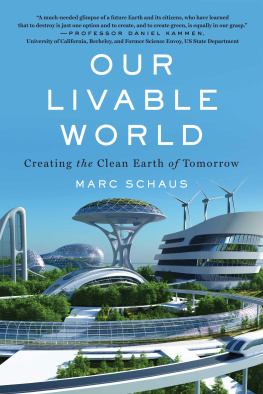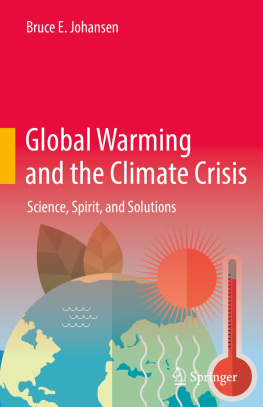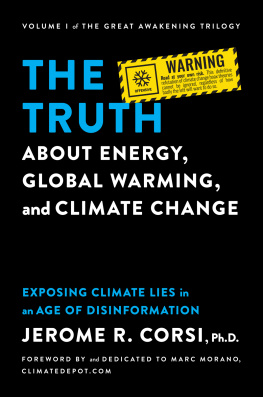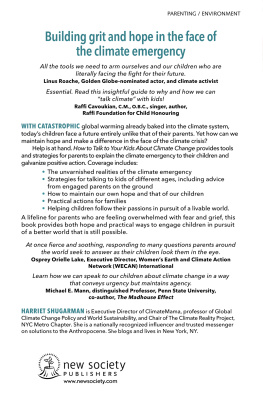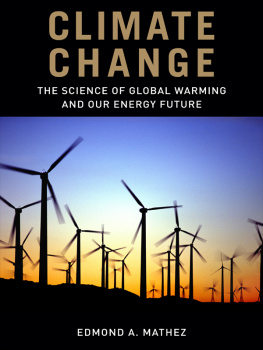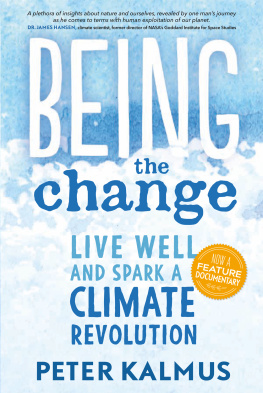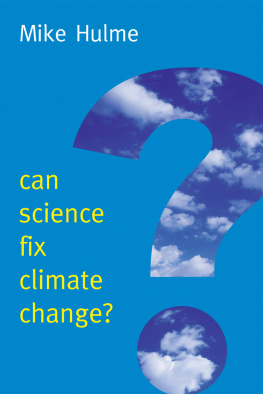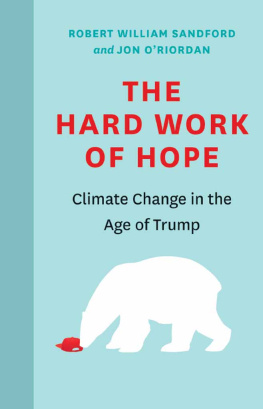



Copyright 2020 by Marc Schaus
All rights reserved, including the right to reproduce this book or portions thereof in any form whatsoever.
For more information, email
Diversion Books
A division of Diversion Publishing Corp.
www.diversionbooks.com
First Diversion Books edition, October 2020
Paperback ISBN: 978-1-63576-720-9
eBook ISBN: 978-1-63576-721-6
Printed in The United States of America
1 3 5 7 9 10 8 6 4 2
Library of Congress cataloging-in-publication data is available on file.
To my parents,
for all their love and support in literally everything I do.
CONTENTS
PREFACE
COVID-19 AND THE ENVIRONMENT

S hortly after the manuscript of Our Livable World was completed, tragic news broke from the city of Wuhan in China that a highly contagious, SARS-like virus had migrated from another animal to humanssending medical teams scrambling and ultimately leading to the outbreak of what we now call COVID-19 (also known colloquially, for the moment, as the coronavirus). Through a combination of early-stage government mismanagement and the sheer power of a virus that spreads quickly and easily, the coronavirus soon escaped the city of Wuhan and spread to neighboring cities, provinces, and eventually surrounding countries in all directions.
As many of us are now beginning to realize, our world in the twenty-first century has become far more interconnected than we ever thought possible. We have become more and more globalized with each passing year. The challenges of one nationparticularly if that nation is a major international playerbecome challenges for the world at large. Such has been the case with COVID-19, an intercontinental menace that quickly moved from regional outbreak to global pandemic. The new coronavirus shot through European nations like a wildfire, igniting explosive epidemics throughout the Middle East, the rest of Asia, and eventually both Americas.
As I write these words, the virus has now reached essentially everywhere on Earth.
Italy was the first country among us to issue a nationwide lockdown, sheltering every citizen in place to avoid unnecessary contact and spare their hospital wards an overflow of patients. But the emergency declaration was made not nearly soon enough. Intensive care units soon spilled outside of hospital walls into mass-produced tents in nearby parking lots. France would later issue similar orders, requiring anyone venturing outside of their home to carry paperwork clearing them to be out in public. Neighboring Spain deployed their military personnel to ensure that anyone found outside was either on their way to or from an approved location for supplies or treatment. Spanish hotels became annexed hospitals under the never-ending flow of new patients, while public transit buses became bulk-transport ambulances to fill them.
Iran was especially devastated. Mass graves the Iranian government would later dig to bury their dead were so large they could be seen from space.
Lockdown is currently looking very different around the globe. In Italy, residents with a balcony will sometimes serenade each other in the evening to maintain what joie de vivre they can. Apartment tenants have been spotted playing tennis from balcony to balcony, while fitness instructors lead workout classes from adjacent rooftops as student look on from their windows or balconies. The famous canals of Venice, typically crowded with boats and saturated with pollutants, became so clear without daily boat traffic that fish became visible for the first time in years.
In America, the coronavirus spread quickly through highly populated states like New York and California, causing lockdowns and shelter-in-place orders that other states would soon emulate to avoid the worst.
In Canada, experts believe that we are only nowat the time of this writingbeginning to climb the medical response curve that everyone keeps telling us we need to flatten. It would seem that were slightly out in front of the virus in terms of saving our ICUs from being overrun, for the moment. But folks are already getting into fistfights over toilet paper at Costco, and what many media outlets are now calling the shut-in economy is very much in full swing.
The trouble with writing a book about the good news of technology and our hope against climate change is that optimism can come off as tone-deaf when offered in a period of deep struggle, sickness, and death. And we all know that climate change has already carried a heavy human cost. So I have attempted not to be tone-deaf in this work, even if incredible academic teams and trail-blazing tech companies genuinely do have great new options to help with our climate woes. But a global scourge like the new coronavirus ought to remind us that the luxuries we enjoy with twenty-first century technology can also empower a host of downsides that we need to navigate responsibly.
Claiming that there are upsides to a global pandemic can seem equally tone-deaf. The death toll from the coronavirus has already been significantand it is still rising as I write. I have not yet personally suffered the death of a loved one due to complications from COVID-19, so striking a connection with anyone who has suffered will be difficult. I cannot claim to feel that pain, nor any sense of such a profound loss. But in assessing the impact of this virus from a carbon emissions perspective and from a view of new tech developments over the years, Id like to offer some glimmers of hope to consider if you are still reading this book in a world beset by mandatory social distancing.
From a climate stand-point, the slowing and stoppage of industrial activity following lockdown orders has caused carbon emissions to plummet around the worldand even more dramatically as fewer folks are driving to their jobs or going away on weekends. In fact, there are practically no cars on the road at all in the areas still strictly sheltering in place. Fewer people are using energy-intensive resources in our cities, and several carbon-heavy industries have all but ground to a halt. Which, in terms of reducing our emissions, has been a temporary reprieve for the environment.
Satellite imagery has allowed scientists to verify that lockdowns and quarantines have had this pronounced effect on reducing emissions. And again: sickness and recession-induced carbon reductions are nothing that those of us who care about the planet ever hope for. But between the time that China locked down their affected cities and right now in mid-April 2020 as I write this piece, Chinas emissions dropped by a full quarter.
Every virus-induced stoppage in industrial activity, electricity production, or transportation has resulted in a net loss of carbon emissions worldwide. Commercial air travel, for examplewhich contributes roughly 2 percent of the worlds carbon emissionsplunged as travelers stayed home. Compared to previous years, data provider OAG reported that aviation reductions departing from mainland China dropped between 50 and 90 percent capacity throughout quarantine periods. And when many other nations borders were closing to prevent incoming infections, those who sought to travel were restricted from doing so. As major events within countries were cancelled to prevent the spread of the virus, the number of flights was reduced even further. Analysts expected that major event cancellations like South By Southwest and large sporting events, involving flights in from all around the country and from multiple industries, saved the world thousands of tonnes of CO 2 emissions from air travel.
Next page
